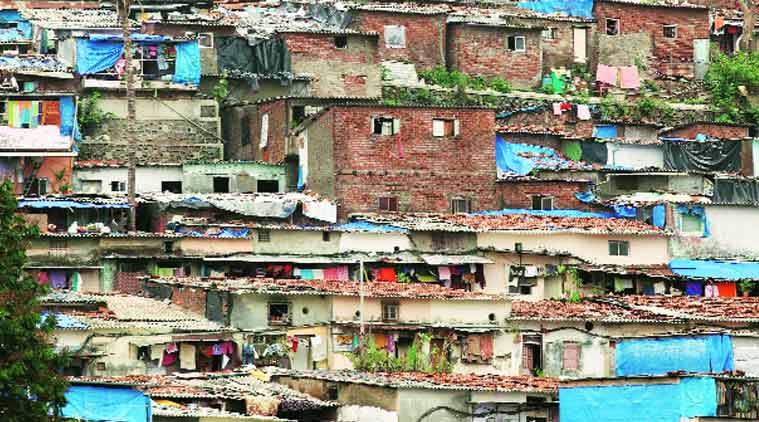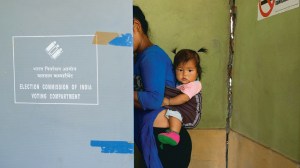- India
- International
Women in slums forced to defecate in open, say community toilets are unsafe at night
12.5% women defecate in open despite BMC making a provision of Rs 5.25 crore for pay-and-use toilets.
 In the surveyed slums, only 43.8 per cent of the population perceived their surroundings as unclean.
In the surveyed slums, only 43.8 per cent of the population perceived their surroundings as unclean.
The country’s richest civic body has made a provision of Rs 5.25 crore for pay-and-use toilets in the city this year, but women in Mumbai’s slums defecate in the open. As many as 85 per cent of those surveyed recently said they perceived community toilets as unsafe at night.
The survey found 12.5 per cent of women in Mumbai’s slums defecate in the open at night. The study titled ‘Housing, water and sanitation survey of slums in Mumbai 2015’, conducted by the International Institute of Population Sciences (IIPS), found that women prefer to take this risk to walking 58 metres, the average distance of the community toilet from their homes.
“Community toilets do not have lights, making it difficult for women to use toilets at night due to safety issues such as theft, being stalked or physical abuse. Men’s toilets are relatively better and men pay Rs 2-3 per use if there is a private party providing water and regulating toilets. No such system was found in toilets for women,” the report stated.
[related-post]
The study of housing conditions in slums including sanitation facilities was conducted by the Population-Human Settlement-Environment centre (Pop-Envis) of IIPS.
The study found that more than 10 per cent women defecate in the open in slum households of Chembur, Gorai, Borivali East, Dahisar and Kandivali. More than 60 per cent households in the same areas reported unsafe toilets. Slumdwellers in Govandi, Parel, Matunga, Byculla and South Mumbai reported safety concerns with community toilets.

While half the population of slum dwellers in surveyed wards were Maharashtrians, 25.6 per cent were from Uttar Pradesh. A significant 57.9 per cent of the population admitted to disposing of children’s faeces in drains or passageways. Despite each household spending an average of Rs 76 per month to use community toilets, 83.5 per cent of the population spoke of poor cleanliness in community toilets and 84.6 per cent complained of irregular water supply.
“With an average waiting time of 20 minutes in morning hours, most slum dwellers skip community toilets and defecate in the open,” said Aparajita Chattopadhyay, Pop-Envis project coordinator.
With just an average of six hours of water availability every day and an average of 96.5 minutes spent on water collection per day, hygiene takes a hit. It was found that 28.9 per cent of those surveyed admitted to having a member in the household with lice, 18.9 per cent continued to clean utensils with mud and ash.
“Women in all slums reported strict water timing as the biggest hurdle from productive work for earning as they have to be at home at odd hours to collect water,” the report stated.
“The burden on water collection falls not only on women, but also girl children, affecting education. On one hand, we talk of Mumbai being a world class city and it is sad that we cannot provide water to every resident, despite a high court order mandating it. Moreover, the Human Development Index report of 2009 showed there is one toilet for 200 people. Because of this and poor lighting and sanitation, women are forced to defecate in the open as these poorly-lit community toilets become dens for anti-social elements. It’s sad that while we have technical expertise to build the Bandra Worli Sea Link, we find 100 impediments in providing basic rights to our women,” said Simpreet Singh, an activist with Ghar Banao Ghar Bachao Andolan.
A whopping 89.6 per cent of deaths occurring in slums is due to respiratory diseases, the study found. The survey looked at 1,452 households and focussed on living conditions of slum dwellers with reference to housing, drinking water, sanitation, fuel use, hygiene, health, and economic status.
In the surveyed slums, only 43.8 per cent of the population perceived their surroundings as unclean. But 98 per cent reported problems due to mosquitoes and 80.4 per cent complained of rats.
anjali.lukose@expressindia.com
Apr 20: Latest News
- 01
- 02
- 03
- 04
- 05






































